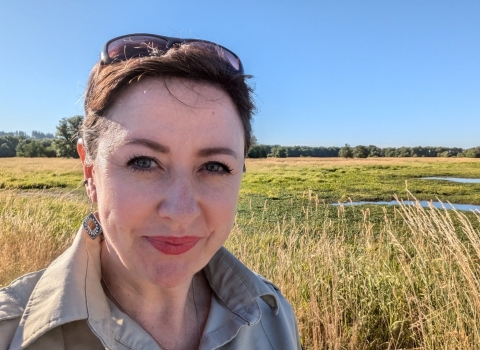The U.S. Fish and Wildlife Service is awarding more than $6.4 million to federally recognized Tribes to benefit fish and wildlife resources and their habitats. This year’s funding will support 36 Tribes for conservation projects across 17 states, benefiting a wide range of wildlife and habitat, including species of cultural or traditional importance to Indigenous communities.
In the Service’s Pacific Southwest Region, projects proposed by five Tribes were selected for funding, totaling over $800,000 to further Tribal conservation goals. Tribes include the Morongo Band of Mission Indians, Pyramid Lake Paiute Tribe, Summit Lake Paiute Tribe, Santa Ynez Band of Chumash Indians and the Yurok Tribe.
“Our success in achieving shared conservation goals depends on our relationships, knowledge-sharing and co-stewardship with federally recognized Tribes,” said Service Director Martha Williams. “By respecting and supporting Tribal interests and needs, we can improve and enhance fish, wildlife and natural and cultural resources for the benefit of all.”
The Biden-Harris administration’s America the Beautifulinitiative is a locally led, voluntary conservation and restoration effort that aims to address the nature and climate crises, improve equitable access to the outdoors, and strengthen the economy. This effort calls upon local, state and federal leaders to honor Tribal sovereignty and support the priorities of Tribal nations when making decisions related to sustainable land management and the conservation of natural, cultural and historical resources.
Projects approved this year in Nevada and California include:
Morongo Band of Mission Indians in California - $192,280
Project summary: development of a management plan for a Tribal wildlife preserve to strengthen the resiliency of the diverse wildlife and habitats found on the Morongo Reservation.
Pyramid Lake Paiute Tribe in Nevada - $196,633
Project summary: preservation and recovery of recently reintroduced California bighorn sheep in the Lake Range through development and implementation of outreach opportunities, monitoring bighorn sheep dispersal, density and health, developing population targets and providing educational opportunities for Tribal youth and other interested Tribes.
Summit Lake Paiute Tribe in Nevada - $38,870
Project summary: implementation of a reptile and amphibian species inventory project to fill knowledge gaps and create a foundation for future Tribal natural resource conservation goals.
Santa Ynez Band of Chumash Indians in California - $199,846
Project summary: updating, enhancing and finalizing the Chumash Wildlands Management Plan, habitat surveys and restoration activities.
Yurok Tribe in California - $200,000
Project summary: investment in educational resources and staff capacity to support alignment of current Yurok ecosystem management practices with traditional stewardship practices.
Tribal communities hold some of the most important conservation lands in the United States. Over 100 million acres of habitat are influenced or managed by the nation’s 574 federally recognized Tribes, who have stewarded their lands since time immemorial.
Tribal Wildlife Grants help Tribes develop increased management capacity, improve and enhance relationships with conservation state partners, address cultural and environmental priorities, and help train the next generation of conservationists by engaging Native students interested in fisheries, wildlife and related fields of study. Some grants have been awarded to support recovery efforts for federally listed threatened and endangered species.
The grants are provided exclusively to federally recognized Native American and Alaska Native Tribal governments and are made possible under the Related Agencies Appropriations Act of 2002 through the State and Tribal Wildlife Grants program. Learn more about the grant program here and more about the Service’s Native American programs here.
The U.S. Fish and Wildlife Service works with others to conserve, protect and enhance fish, wildlife, plants and their habitats for the continuing benefit of the American people. For more information, visit www.fws.gov and connect with us on social media:
Facebook, Instagram, X (formerly known as Twitter), LinkedIn, Flickr, and YouTube.



